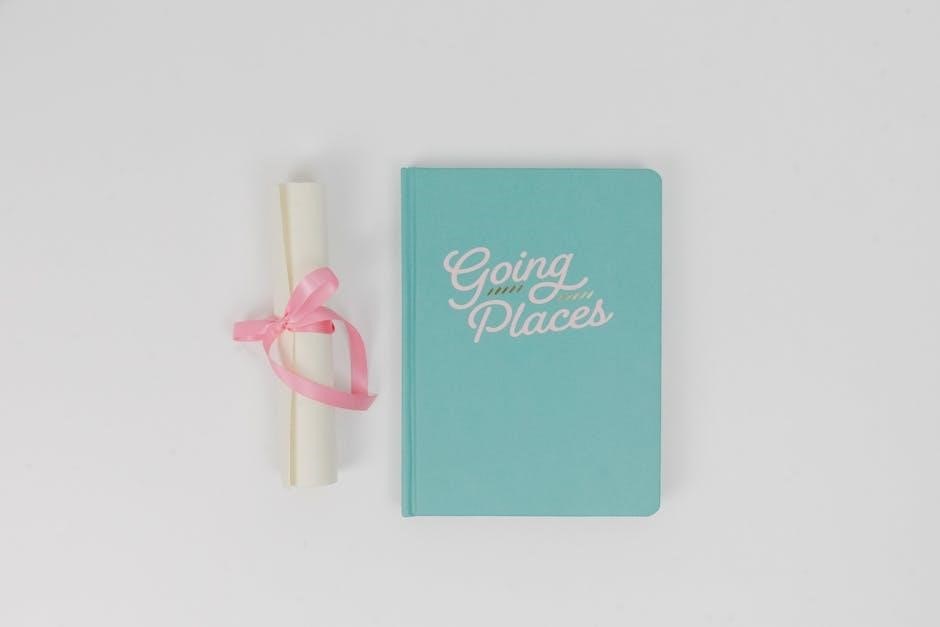
going on a bear hunt book pdf
Were Going on a Bear Hunt Book PDF: A Comprehensive Guide
Embark on an exciting journey with “We’re Going on a Bear Hunt,” now accessible in PDF format! This comprehensive guide explores the digital availability of Michael Rosen’s beloved children’s book. Discover resources, interactive versions, and read-aloud opportunities, enhancing your child’s literary adventure.
“We’re Going on a Bear Hunt” is a timeless classic in children’s literature, penned by Michael Rosen and beautifully illustrated by Helen Oxenbury. This engaging story follows a family’s adventurous quest through various terrains – long, wavy grass, a deep, cold river, thick, oozy mud, a big, dark forest, and a swirling, whirling snowstorm – all in pursuit of a bear. The repetitive and rhythmic text makes it a favorite for read-aloud sessions, captivating young audiences with its interactive nature.
The book fosters imagination and encourages children to explore the world around them through sensory experiences. Its simple yet evocative language allows kids to easily participate, mimicking sounds and actions throughout the story. “We’re Going on a Bear Hunt” not only provides entertainment but also promotes early literacy skills, such as phonemic awareness and vocabulary development. The journey, filled with anticipation and a touch of suspense, culminates in a surprising and ultimately heartwarming resolution, teaching valuable lessons about courage, family, and facing one’s fears. The enduring appeal of this book lies in its ability to connect with readers of all ages, making it a cherished addition to any family’s bookshelf.
Availability of “We’re Going on a Bear Hunt” in PDF Format
The digital age has made “We’re Going on a Bear Hunt” even more accessible, with the book readily available in PDF format across various online platforms. This digital version offers a convenient way to enjoy the story on devices like tablets, computers, and smartphones, making it perfect for on-the-go entertainment or classroom use. Many websites and online libraries offer the PDF for download, sometimes for free or as part of a subscription service.
The PDF format retains the original illustrations and text, ensuring that the reading experience is consistent with the physical book. Some digital versions may even include interactive elements, such as clickable images or audio narration, further enhancing engagement. Teachers and parents often utilize the PDF to project the story onto a screen during group reading sessions, allowing everyone to follow along easily. The availability of “We’re Going on a Bear Hunt” in PDF format broadens its reach, making it a valuable resource for educators, families, and anyone who wants to share this beloved story with children.
Where to Find Free PDF Versions
Finding free PDF versions of “We’re Going on a Bear Hunt” requires careful navigation of the internet. While numerous websites claim to offer free downloads, it’s crucial to prioritize legitimate and legal sources to respect copyright laws and the author’s work. Public libraries often provide access to digital books, including “We’re Going on a Bear Hunt,” through their online platforms. These platforms usually require a library card for access.
Educational websites and online archives dedicated to children’s literature may also offer free PDF versions. However, always verify the source’s credibility before downloading anything to avoid potential malware or copyright infringement. Be wary of websites that seem suspicious or request excessive personal information. Keep in mind that free versions might have lower resolution or lack interactive features found in paid versions. Remember, supporting authors and publishers ensures continued creation of quality content for children.
Interactive Elements in PDF Versions
Interactive PDF versions of “We’re Going on a Bear Hunt” enhance the reading experience, transforming it from passive to active engagement. These versions often include clickable elements that trigger animations, sound effects, or character movements, bringing the story to life. Children can tap on the grass to hear it swish, the river to hear it gurgle, or the bear to hear it roar, creating an immersive sensory experience.

Some interactive PDFs incorporate simple games or activities related to the story. These might include matching games with characters or scenes, simple puzzles that reinforce comprehension, or even opportunities to record and playback children’s voices reading along with the story. These interactive features promote cognitive development, enhance memory retention, and foster a deeper connection with the narrative. Furthermore, interactive elements can cater to different learning styles, making the story accessible and enjoyable for a wider range of children.

“We’re Going on a Bear Hunt” as a Read Aloud Resource
“We’re Going on a Bear Hunt” is a fantastic read-aloud resource, cherished by educators and families. Its repetitive phrases and rhythmic structure make it engaging for young listeners, encouraging participation and prediction. The book’s simple yet evocative language paints vivid pictures in children’s minds, fostering imagination and language development. Reading aloud helps children connect with the story, understand emotions, and build vocabulary in a fun and interactive way.
Using the PDF version as a read-aloud resource offers flexibility. Projecting the book onto a screen allows for group reading in classrooms or at home. Parents can use the PDF on tablets or e-readers for bedtime stories, adjusting the font size for easy viewing. The digital format also enables easy access to the book on various devices, making it convenient for spontaneous reading sessions anytime, anywhere. The rhythmic text also lends itself well to dramatic interpretations, encouraging expressive reading and further engaging children in the story.
Educational Activities Based on the Book
“We’re Going on a Bear Hunt” provides a rich foundation for a wide range of educational activities. The book’s themes and structure lend themselves perfectly to lessons in literacy, science, and creative expression. For literacy, children can explore prepositions by acting out the journey, identifying where they are “over,” “under,” and “through” different obstacles. Sequencing activities can reinforce comprehension, having children retell the story in the correct order using picture cards.

Science lessons can focus on the different environments encountered during the bear hunt. Children can learn about the characteristics of grass, rivers, mud, forests, and snowstorms, discussing the animals and plants that live in each habitat. Sensory exploration is another engaging activity, where children create their own versions of the environments using textures and materials. They can also engage in creative writing, imagining their own bear hunt adventures and describing the landscapes they encounter. The PDF version can be used to print out activity sheets and provide visual aids for these lessons.
Lyrics and Song Versions of the Story
“We’re Going on a Bear Hunt” has transcended its form as a picture book to become a beloved children’s song, enhancing its interactive appeal and making it a favorite for sing-alongs and performances. The lyrical structure of the story makes it naturally adaptable to music, with its repetitive phrases and rhythmic cadence. Numerous versions of the song exist, each adding its unique flavor to the familiar narrative. These songs often incorporate actions and movements that correspond to the different obstacles encountered during the bear hunt, such as swaying like grass, splashing through a river, and squelching in mud.
PDFs containing the lyrics to “We’re Going on a Bear Hunt” are readily available online, allowing educators and parents to easily access and share the song with children. These lyric sheets often include suggested actions to accompany the words, further engaging children in the story. The repetitive nature of the lyrics makes it easy for children to learn and sing along, fostering language development and memory skills. Furthermore, the song versions of the story provide an alternative way to experience the narrative, catering to different learning styles and preferences.
Creating Sensory Experiences Inspired by the Book
“We’re Going on a Bear Hunt” lends itself beautifully to creating immersive sensory experiences for children. The book’s vivid descriptions of different terrains – long wavy grass, a cold river, thick mud, a dark forest, a swirling snowstorm, and a narrow cave – provide a framework for engaging multiple senses. Educators and parents can recreate these environments using various materials to stimulate touch, sound, and even smell.

For example, long green fabric or streamers can represent the grass, while a shallow tub of water with ice cubes mimics the cold river. Mud can be simulated with a mixture of soil and water or even chocolate pudding for a taste-safe option. A dark tent or blanket fort can become the forest, and a fan blowing shredded paper creates the snowstorm. The cave can be represented by a small, enclosed space with tactile elements like soft blankets or textured fabrics. Children can then act out the story, moving through each sensory station and experiencing the adventure firsthand. This hands-on approach enhances comprehension, imagination, and engagement with the narrative.
Thematic Sculpture Trails and Events
The enduring popularity of “We’re Going on a Bear Hunt” has inspired the creation of thematic sculpture trails and events, bringing the book’s adventurous spirit to life in physical spaces. These installations typically feature representations of the story’s key environments and characters, allowing children and families to embark on their own bear hunt in a real-world setting. Sculpture trails often incorporate artistic interpretations of the long wavy grass, the deep cold river, the thick oozy mud, the big dark forest, and the swirling whirling snowstorm, culminating in a bear-themed surprise.
These events may also include interactive elements, such as storytelling sessions, craft activities, and sensory play areas that further immerse participants in the world of the book. The sculpture trails and events provide opportunities for families to engage with literature in a fun, active way, encouraging creativity, exploration, and a love of reading. They also serve as a testament to the book’s lasting impact and its ability to inspire imaginative play and outdoor adventures.
Analyzing the Story’s Structure and Themes
“We’re Going on a Bear Hunt” offers a deceptively simple narrative structure that resonates deeply with young readers. The story follows a repetitive, cyclical pattern, as the family encounters and overcomes a series of natural obstacles on their quest. This repetition, coupled with the call-and-response nature of the text, makes the book highly engaging and predictable for children, fostering a sense of confidence and participation.
The book explores themes of courage, determination, and family unity. Despite facing various challenges, the family remains undeterred in their pursuit of the bear, demonstrating resilience and a willingness to confront the unknown. The story also celebrates the power of imagination and the joy of outdoor exploration, encouraging children to embrace adventure and connect with the natural world. The ultimate retreat from the bear, followed by the family’s return home, provides a sense of comfort and security, reinforcing the importance of family and the familiar.
Copyright and Permissions for Using the Book
When accessing and utilizing “We’re Going on a Bear Hunt” in PDF format, it is crucial to understand copyright regulations and obtain necessary permissions. Michael Rosen’s work, along with Helen Oxenbury’s illustrations, are protected by copyright law, ensuring the creators’ rights to their intellectual property; Unauthorized reproduction, distribution, or adaptation of the book is a violation of these rights.
For educational or commercial use of the PDF, obtaining permission from the copyright holders, typically the publisher Simon & Schuster, is essential. This includes using the book in public performances, creating derivative works, or distributing copies. Fair use guidelines may apply in certain educational contexts, such as classroom read-alouds, but it’s always best to seek explicit permission to avoid infringement. Respecting copyright ensures the continued creation and availability of quality children’s literature.